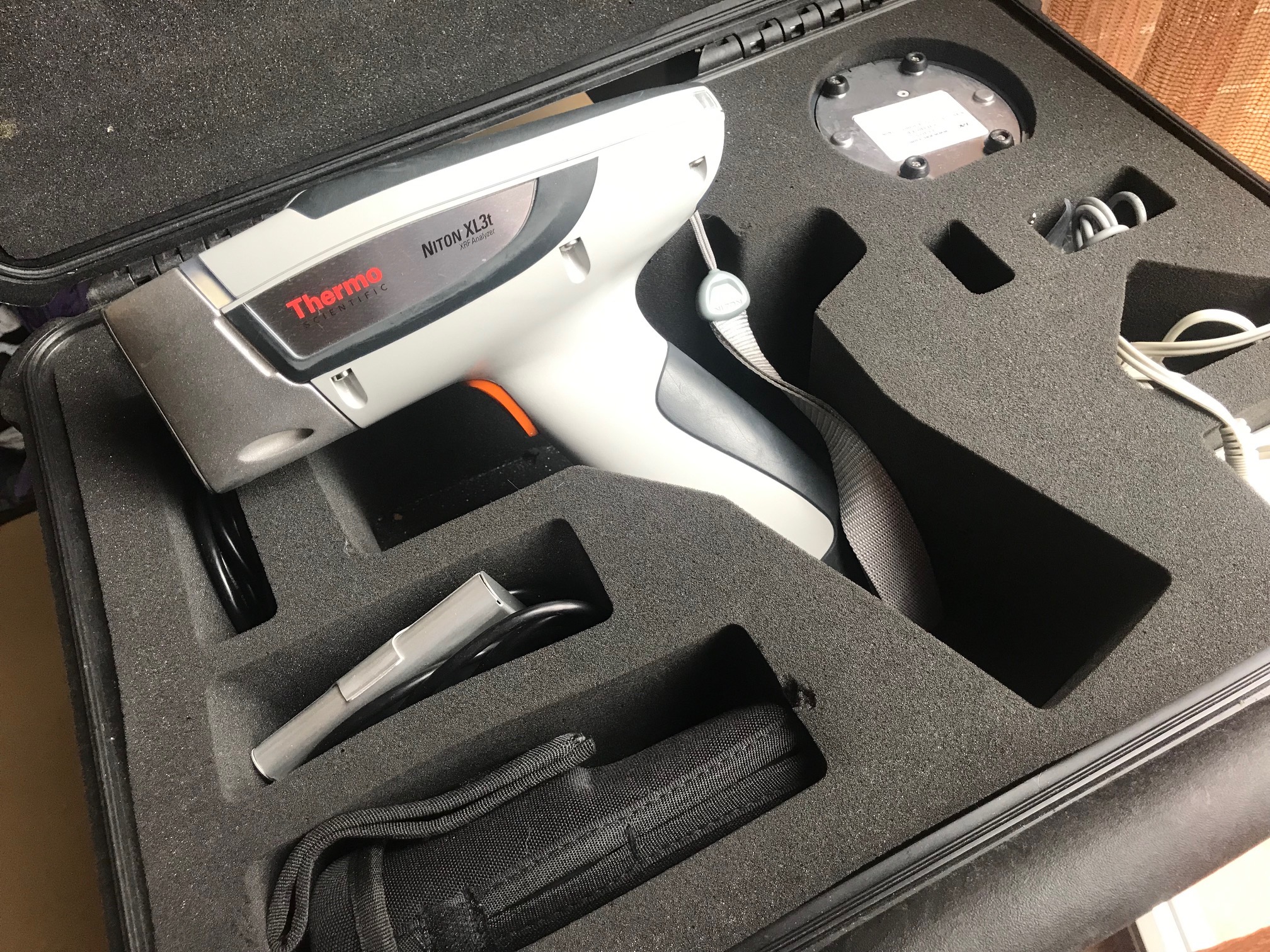A list of folks across the U.S. who do consumer goods testing with the appropriate instrumentation… Stand by!
 Posted: October 19, 2020
Posted: October 19, 2020
Updated: October 20, 2020
STAND BY!
So often readers contact me and tell me their consumer goods have been tested “with an instrument that only reads in milligrams per square centimeter”. Measuring in milligrams per square centimeter is the standard for house paint, not toys. Unfortunately, readings using this measurement standard are not really useful in determining if consumer goods are safe for a child to use (with “safe for a child” being the CPSC standard of below 90 ppm Lead in the paint or coating or below 100 ppm Lead in the substrate).
“1 milligram per square centimeter” is roughly equivalent to 5,000 ppm and 0.1 (the lowest reading for most of these machines) is roughly equivalent to 500 ppm! A “low” reading of “less than 1.0” or even “less than 0.1” (milligrams of Lead per square centimeter) obtained with an instrument designed to test house paint is simply neither precise enough – nor, given the relatively high low threshold of these instruments – accurate enough for one to make a determination as to whether or not a consumer good is actually safe for a child (i.e. below 90 ppm Lead).
Instrument operators who are doing consumer goods testing — but not using a high-precision XRF instrument designed for testing consumer goods, that reads in “ppm” are – often unknowingly – being irresponsible and misleading their clients — as the information they are providing is not actually useful. They fundamentally should not be taking this consumer goods testing work at all if they do not have the appropriate instrumentation and training to collect and interpret analysis data with sufficient precision and accuracy to be of use in this context. Unfortunately, many XRF owners are not actually even aware of this distinction (they may not even know that there are specific instruments, with specific software packages expressly designed for testing for Lead in consumer goods down to single digit parts per million).
As a result, I am also frequently asked by my readers if I know anyone in their area who is trained and certified to do consumer goods testing, and who I am certain uses the appropriate instrumentation [for example a Niton XL3T with a “consumer goods” testing software package installed] — that is designed to detect (in “parts per million”) down to double-digit ppm accuracy, with a single-digit ppm margin of error — required for consumer goods testing.
Since I get this question so often, I decided to start a list (the list is below)! Note: as I write this, there’s no one actually on this list yet … but please check back here in the next day or two, and I will be updating it – as I hear back from high-precision XRF owners across the country.
Thanks for reading! As always, please let me know if you have any questions. Also – if at any time you find out that the information on this post is inaccurate for any reason (for example the contractor is no longer in business or they no longer have the appropriate instrumentation for example) please let me know that too)!
Tamara Rubin
#LeadSafeMama
Contractors with known appropriate instruments for consumer goods testing
will be posted here shortly…

Never Miss an Important Article Again!
Join our Email List




This is great news, Tamara! I am looking forward to seeing the list as it materializes.
Me too! So far I have one person from Chicago that got back to me!
I’m excited about this too, but I’m not in the USA!
I live just outside Chicago – please provide the contact info for this person from Chicago who has appropriate instrumentation for consumer goods testing for lead ?
Thank you !
Any updates on the Chicago person? Also interested
Hi! I would LOVE to see this list come into fruition. Tamara, is there anything I could do to help facilitate this? Reaching out to XRF owners in different cities and following up with them maybe? I know you have a TON on your plate already. Thanks!
The key is not just XRF owners – but XRF owners that have an Niton XL3t or XL5 with consumer goods mode installed (and the ability to test down to single digit ppm for Lead, Mercury, Arsenic, Cadmium and Antimony – etc.) I would love help identifying those people – none have come forward. Thank you!
T
I have someone coming to my home (in Phoenix, AZ) on Tuesday who has an instrument that reads in ppm. I didn’t clarify it’s exact accuracy, though I will contact her on Monday to confirm. Are the 2 instruments you’ve listed the only ones that can test down to the appropriate accuracy or could there be others?
Too bad that there’s still nobody on this list! I hope more consumer goods testers will reach out to you! Thanks for raising up the flag and creating a resource for people to reference.